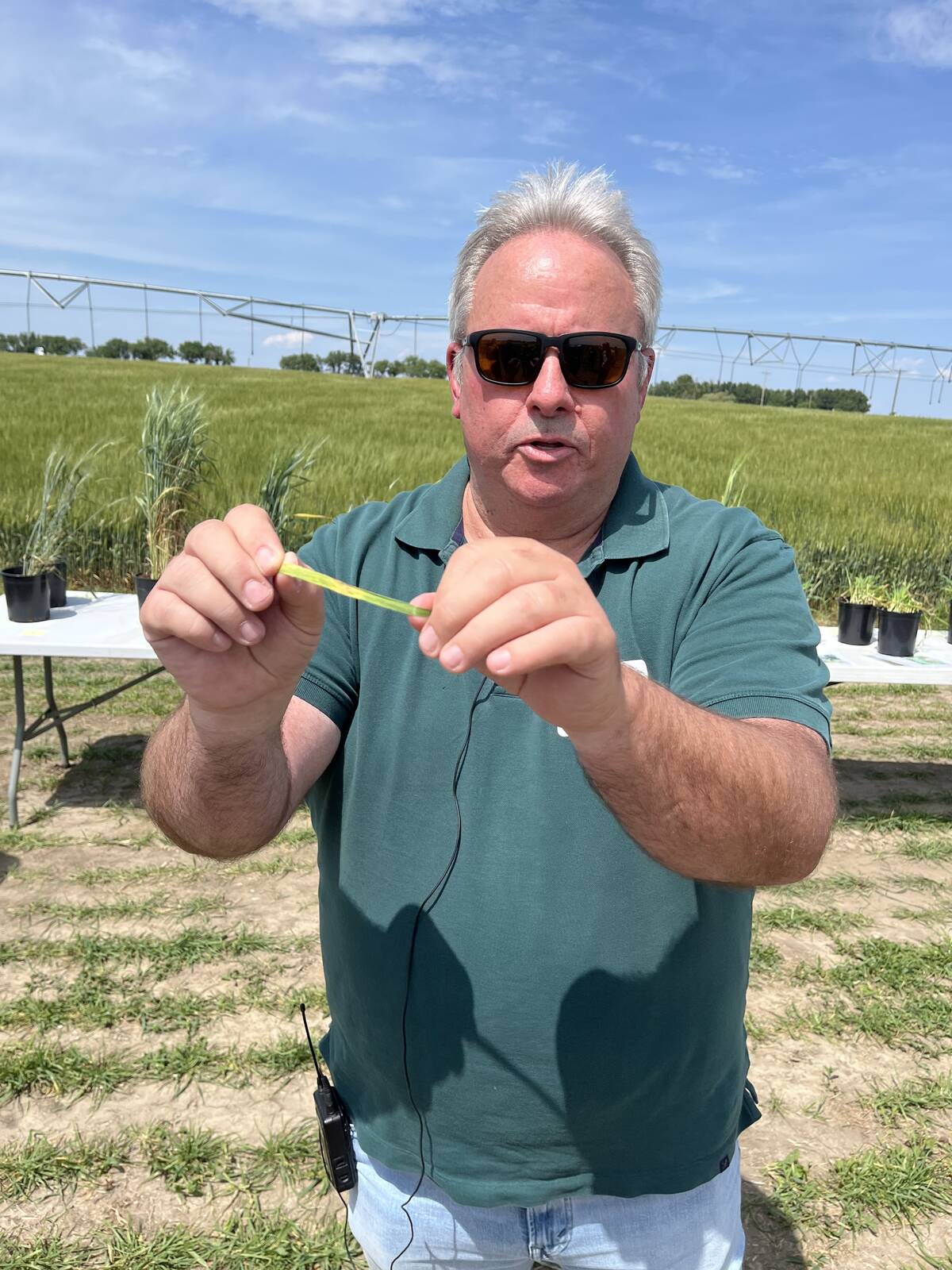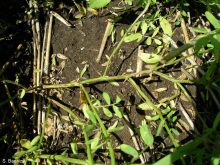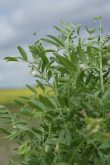Confirmed sightings of stripe rust in Alberta have prompted experts to encourage growers in southern Alberta, along with those in the Drumheller and Calgary regions, to scout their fields for the disease.
Mike Harding, crop assurance lead for Alberta Agriculture and Irrigation, received a recent call from Nutrien, saying three of its agronomists had found stripe rust near Rosedale, Balzac and Strathmore, according to an Agri-News press release.
Some fields had only a few stripes, while others had significant patches of rust.
Read Also

Bunge’s crop mix is changing
Bunge has predominantly been a soybean processing firm, but that’s about to change after the merger with Viterra with softseed processing and grain merchandising gaining ground.
The disease affecs wheat, barley and triticale.
A fungicide application for susceptible varieties is warranted when approximately one plant per sq. metre is rusted.
Scouting for early detection is critical because once five per cent of the flag leaf area becomes symptomatic in susceptible varieties, it is very challenging to manage with a fungicide.
A fungicide application may not be necessary for resistant varieties.
Once any variety is past anthesis, a fungicide application is not likely to provide much economic benefit.
Harding was at a field school day at Farming Smarter near Lethbridge in late June, talking about stripe rust disease properties.
“This is not a residue-borne disease. This is a disease that doesn’t over-winter here usually. It’s only happened once or twice in the last 25 years,” said Harding.
“It blows in. Spores travel through the air from the Pacific Northwest (for southern Alberta). The years they come early enough, they can cause significant damage, especially in susceptible varieties.”
Stripe rust is managed through resistant cultivars and fungicides. but the chemical must be applied before the flag leaves/upper canopy becomes too heavily colonized.
“Stripe rust is a disease, and powdery mildew as well, that when the conditions are conducive, it’s very explosive and can move quickly through the crop. You have to be scouting for it, aware of it and be ahead of it.”
The Prairie Crop Disease Monitoring Network has disease scouting cards as well as weekly stripe rust risk level updates. It looks at reverse wind trajectories from the areas where stripe rust over-winters.
“For us that’s the Pacific Northwest. It looks for the crop development, the stripe rust development. It looks at when air parcels move over that and come to us, and it produces a speedometer that tells you the relative risk of stripe rust showing up in southern Alberta,” said Harding.
Stripe rust appears as long yellow to orange linear stripes along wheat or barley leaves.
The pathogens of stripe rust are different on barley and wheat, and they can overlap, but are very weak, Harding said.
“The barley pathogen does not cause a lot of disease on wheat and vice versa,” he added..
“Normally, when we see stripe rust, we mostly see it on wheat crops. It can survive on winter wheat when we have a mild winter or a lot of snow cover.”
Given the late appearance of stripe rust in 2025, there may be questions related to crop growth stage, potential yield losses and fungicide timing.
It appeared relatively late on the Prairies in 2024 and the PCDMN posted several updates in relation to these observations and information related to crop growth stage, potential yield losses and fungicide timing.
For information on fungicide options, timings and pre-harvest intervals, consult local provincial crop protection guides and follow label recommendations.















